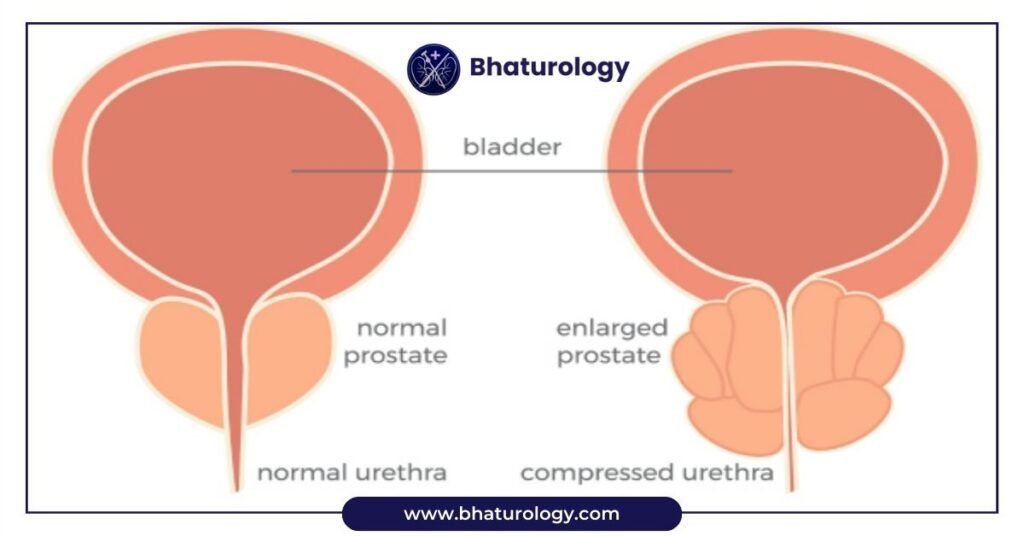Benign Prostatic Hyperplasia (BPH), commonly known as an enlarged prostate, is a prevalent condition among aging men. It occurs when the prostate gland gradually enlarges, causing various urinary symptoms. Understanding the causes, symptoms, diagnosis, and treatment options for BPH is crucial for effectively managing this condition.
BPH is a non-cancerous enlargement of the prostate gland, primarily affecting men over the age of 50. As the prostate grows larger, it can compress the urethra and obstruct the flow of urine, leading to bothersome urinary symptoms.
Causes of BPH
The exact cause of BPH is not fully understood, but hormonal changes associated with aging, particularly the increase in dihydrotestosterone (DHT), play a significant role in its development. Other factors contributing to BPH may include family history, obesity, and lifestyle factors.
Symptoms of BPH
Common symptoms of BPH include:
- Frequent or urgent need to urinate
- Difficulty initiating urination
- Weak urine stream
- Dribbling at the end of urination
- Incomplete emptying of the bladder
- Nocturia (frequent urination at night)
These symptoms can significantly impact the quality of life and may worsen over time if left untreated.
Diagnosis of BPH
Diagnosing BPH typically involves a thorough medical history review, physical examination, and diagnostic tests, including:
- Digital rectal examination (DRE) to assess the size and condition of the prostate gland.
- Urinalysis to rule out urinary tract infections or other conditions.
- Prostate-specific antigen (PSA) blood test to screen for prostate cancer.
- Uroflowmetry to measure the rate and volume of urine flow.
- Transrectal ultrasound (TRUS) or prostate MRI is used to evaluate the size and structure of the prostate gland.
Treatment Options for BPH
Treatment for BPH aims to alleviate symptoms, improve urinary flow, and prevent complications. Depending on the severity of symptoms and individual preferences, treatment options may include:
- Medications: Alpha-blockers, 5-alpha reductase inhibitors, and combination medications can help relax the prostate and reduce its size.
- Minimally invasive procedures: Transurethral resection of the prostate (TURP), laser therapy, and prostate artery embolization (PAE) are minimally invasive procedures that can effectively relieve urinary symptoms.
- Surgical intervention: In severe cases or when other treatments fail, surgical procedures such as open prostatectomy or robotic-assisted prostate surgery may be necessary to remove or reduce the size of the prostate gland.
Urology Hospital In Jaipur
If you’re seeking specialized care for BPH, find the urology hospital in Jaipur. It is paramount for receiving a comprehensive evaluation, personalized treatment, and expert guidance. Look for a hospital with a team of experienced urologists, state-of-the-art facilities, and a track record of successful outcomes in managing BPH and other urological conditions.
By seeking timely medical attention and partnering with the best urology clinic in Jaipur, you can effectively manage BPH, alleviate symptoms, and improve your quality of life. Don’t hesitate to schedule a consultation with a doctor to discuss your concerns and explore the most suitable treatment options tailored to your needs.



